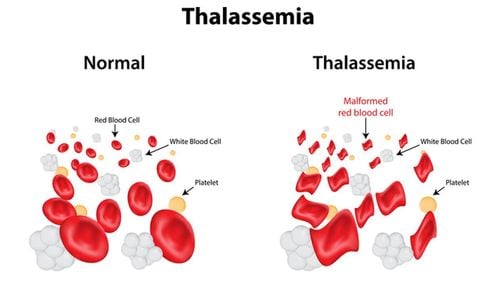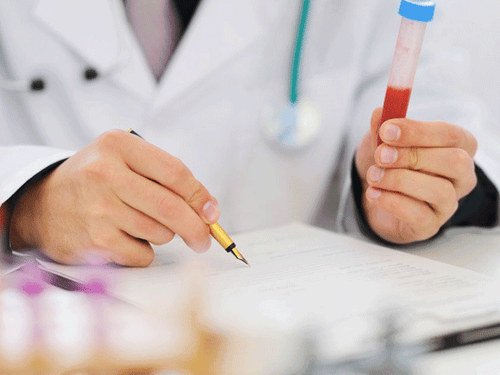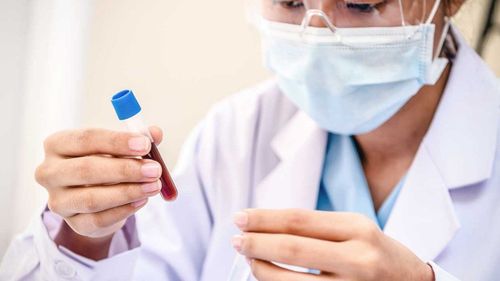This is an automatically translated article.
Article written by Doctor Do Phuoc Huy, Vinmec High Technology Center
According to WHO statistics, 2015. Out of 2.68 million neonatal deaths, 11.3% (corresponding to 303,000 babies) died due to birth defects. Birth defects cause many long-term consequences for individuals, families and society. Common and severe birth defects include Down syndrome, congenital heart defects, and neural tube defects. With more than 50% of birth defects of unknown cause, how do we diagnose and prevent?
1.Definition of birth defects
Congenital anomalies, also known as congenital disorders, are defined as structural or functional abnormalities (eg, congenital metabolic disorders) that are present during pregnancy. These congenital disorders can be diagnosed before birth, at newborn screening, or later in childhood.
2.What are the causes of birth defects?
Common causes of birth defects are genetic and environmental (including nutrition, infection, exposure to toxins and other environmental factors).
2.1. Genetic causes Genetic causes of birth defects are divided into three categories: chromosomal abnormalities, single gene abnormalities, and other genetic abnormalities.
Chromosomal abnormalities

Hội chứng Down thai nhi
Chromosomal abnormalities include many types such as abnormalities in the number of chromosomes (addition or deletion of an entire chromosome), chromosome structure abnormalities. Many zygotes (combination of egg and sperm) carrying such abnormalities do not develop into embryos, but there are also zygotes that can develop into later stages of pregnancy or even be born and have an embryo. relatively long lifespan as trisomy 21 (trisomy 21).
To screen for these abnormalities will include many methods such as Double Test , Triple Test , or NIPT ...
To detect these abnormalities will have many methods and depending on the type and degree of abnormalities will be have suitable tests such as: Chromosome (Chromosome Formula, Karyotype), FISH, Whole genome sequencing by Next generation sequencing )...
Single-gene abnormalities
In contrast to chromosomal abnormalities, single-gene defects can occur again in subsequent pregnancies with a percentage of risk depending on the disease and individual abnormal genes. For example, phenylketonuria (PKU) is an inherited condition caused by an abnormality in the activity of the PAH enzyme. Because this enzyme is encoded by the PAH gene only on chromosome 12, PKU is a monogenic abnormality.
With single-gene abnormalities, there are many forms of inheritance including dominant inheritance, autosomal recessive inheritance, and sex-linked inheritance. With each genetic form, there will be a different rate of children born after re-infection. For example, with recessive inheritance, the odds of a child being born with the disease again if the parents carry the same mutated gene (carrier) is 25%.
Pregnancy ultrasound is a considered tool for partial screening of pathologies associated with single-gene abnormalities. However, many disease groups are ineffective because they do not show abnormalities on ultrasound like metabolic disorders.

Hội chứng Prader-Willi yếu tố di truyền gây nên dị tật
Other genetic factors
In addition to the above genetic factors, there are many other factors cause abnormalities such as: epigenetic abnormalities (eg, Prader-Willi, Angelman and Beckwith-Wiedemann syndromes), mitochondrial genomic abnormalities (eg, Melas syndrome), or a combination of multiple abnormalities often inherited.
2.2. The influence of environmental factors
Infectious
Many groups of infectious diseases are associated with increased rates of birth defects such as rubella infection. Pregnant women infected with Rubella in the early stages of pregnancy, especially in the first 12 weeks (1st trimester) will have the fetus with congenital Rubella Syndrome (CRS). The fetus with CRS can carry birth defects such as deafness, cataracts, growth retardation, congenital heart ...
Nutrition
Besides environmental factors such as infection, environmental factors As nutrition for the mother is also very important in the development of the child. If the mother lacks folic acid during pregnancy or a diet without iodine will affect the development of the baby, especially the development of the nervous system, for example, folic acid deficiency increases the risk of having a baby with spina bifida. (spina bifida).
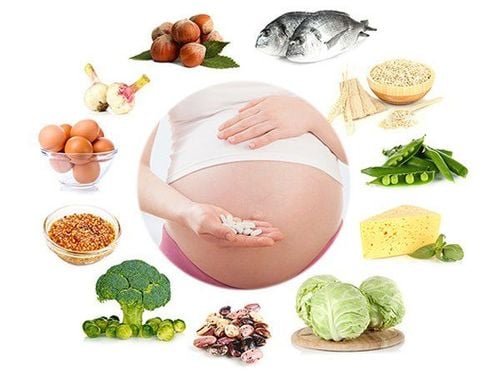
Nếu mẹ thiếu acid folic làm tăng nguy cơ trẻ bị tật cột sống chẻ đôi (spina bifida).
Using drugs in pregnancy
Using antibiotics during pregnancy should be cautious, because some antibiotics can affect the fetus such as Tetracycline can change the color of the baby's teeth, so Tetracycline Not recommended for use after 15 weeks of pregnancy.
Other environmental factors
Pregnant women before and during pregnancy will increase the risk of birth defects when exposed to toxic chemicals such as pesticides; heavy metals...
3. How to prevent birth defects in the fetus?
To prevent birth defects, it is necessary to combine many measures, specifically as follows:
Adequate nutrition for pregnant women, such as substances such as folic acid. Using drugs during pregnancy requires a prescription and discussion with an obstetrician-gynecologist, especially antibiotics. Avoid contact with chemicals such as pesticides, heavy metals. Get vaccinated before pregnancy, especially the Rubella group. Screening and treatment of other infections such as Rubella, syphilis... Prenatal screening and screening for diseases such as chromosomal abnormalities such as Down syndrome, Patau syndrome, Edwards with birth especially a test with high sensitivity and specificity such as NIPT. Screening for common monorecessive diseases such as hemolytic anemia.
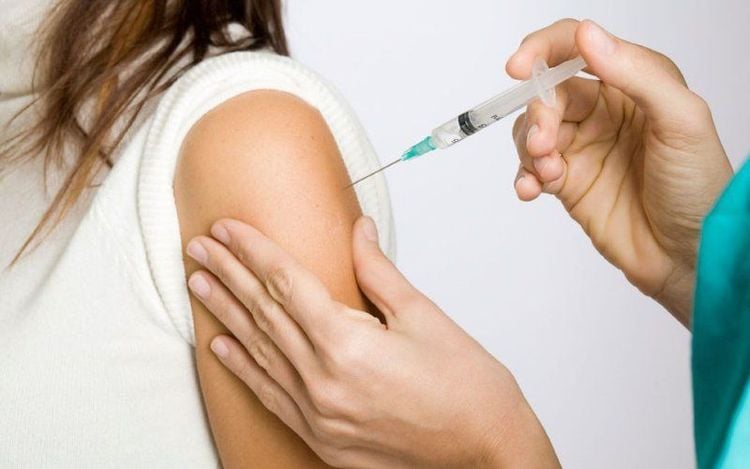
Tiêm vắc-xin trước khi mang thai giúp phòng ngừa dị tật bẩm sinh thai nhi
According to the recommendations of experts, to prepare for a healthy pregnancy, both husband and wife should check their reproductive health 3-5 months before becoming pregnant.
The wife should:
Get vaccinated before pregnancy (especially against rubella because rubella in pregnancy is extremely dangerous ) Genetic testing to screen for genetic diseases before pregnancy Check for secondary infections In particular, women over 35 years of age, if they want to become pregnant (especially if they have never been pregnant), will have to have a very detailed health check because pregnancy at this age often problems: Ovarian failure, premature birth, higher risk of birth defects, placenta previa, preeclampsia. The husband should:
Check reproductive health, detect diseases of testicular atrophy, physiological weakness, weak sperm... Sexually transmitted diseases, especially those that cannot be cured, are extremely dangerous. Vinmec currently has many comprehensive health care programs for couples, pregnant mothers and their unborn babies, including basic pre-marital examination packages, advanced pre-marital examination packages, and maternity packages. . Vinmec has a team of experienced doctors in the fields of obstetrics and gynecology, IVF, stem cells, gene technology, capable of synchronously and comprehensively deploying the most advanced assisted reproductive techniques today.
Please dial HOTLINE for more information or register for an appointment HERE. Download MyVinmec app to make appointments faster and to manage your bookings easily.




